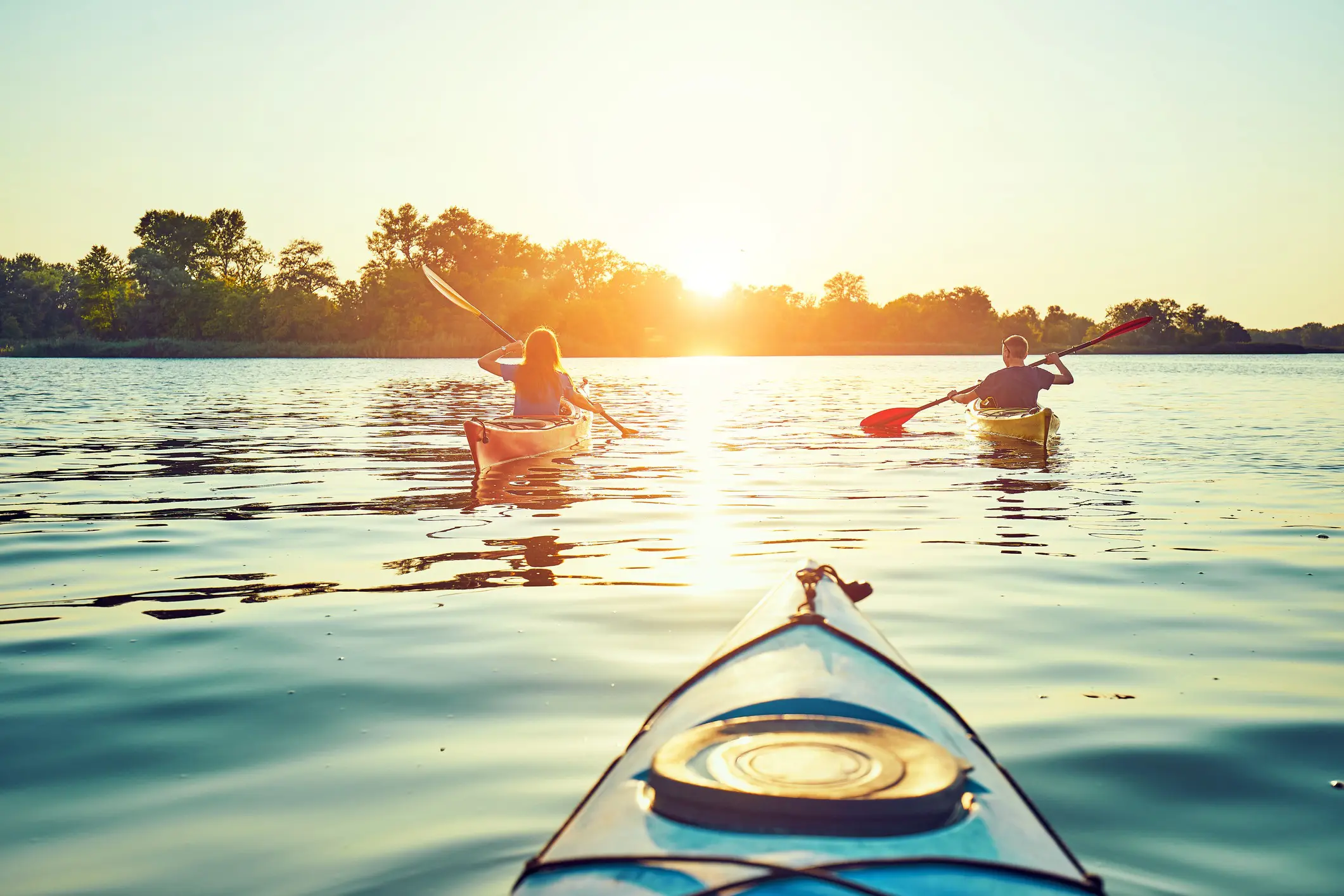Pros and Cons of Living on the Water
Published on July 11, 2024 | 6 Minute read

Melanie
Ortiz Reyes
Content Specialist
Living on the water, whether by a lake, river, or ocean, offers a unique lifestyle that many people dream of. The allure of beautiful views, access to water activities, and a serene environment are just a few of the benefits. However, like any lifestyle choice, there are also downsides to consider.

Photo: Lighthouse Landing
Pros of Living on the Water
1. Scenic Views and Aesthetic Appeal
One of the most obvious advantages of living on the water is the breathtaking views. Whether you’re looking out over a tranquil lake, a flowing river, or the expansive ocean, the natural beauty is unparalleled. The changing scenery with different times of the day and seasons adds a dynamic element to the living experience.
2. Access to Water Activities
Living near water provides easy access to a wide range of recreational activities. Boating, fishing, kayaking, swimming, and paddleboarding are just a few of the activities that become part of your daily life. For those who love water sports, this proximity is a major draw.
3. Health Benefits
The proximity to water has been shown to have various health benefits. The calming effect of water can reduce stress and anxiety, improve mood, and enhance overall mental well-being. The opportunity for regular physical activities like swimming and kayaking also promotes better physical health.
4. Unique Wildlife and Nature Experiences
Waterfront properties often come with the added benefit of closer encounters with nature. Birdwatching, observing marine life, and enjoying the local flora and fauna can be everyday experiences. These interactions with nature can be educational and enriching, especially for families with children.
5. Increased Property Value
Waterfront properties are typically in high demand, which can lead to increased property values. If you own a home on the water, it can be a good investment, as these properties often appreciate in value over time. The unique location can also make it easier to sell in the future.
6. Privacy
Many waterfront properties offer a greater sense of privacy and seclusion compared to urban or suburban settings. The natural barrier of water can mean fewer neighbors and less noise, creating a peaceful living environment.
7. Enhanced Lifestyle and Prestige
There is a certain prestige associated with living on the water. It can be a symbol of success and provide a lifestyle that is both luxurious and desirable. The ability to entertain guests with water views or take them on a boat ride can add to your social status and enjoyment.

Cons of Living on the Water
1. High Maintenance and Upkeep
Living on the water can come with significant maintenance challenges. The presence of moisture and salt (in coastal areas) can lead to faster wear and tear on your property. Regular maintenance of docks, seawalls, and boats is also required, which can be costly.
2. Increased Risk of Natural Disasters
Waterfront properties are often more vulnerable to natural disasters such as hurricanes, floods, and storm surges. This increased risk can lead to higher insurance premiums and the potential for significant damage to your home. It’s important to be prepared and have a plan in place for these events.
3. Higher Costs
The allure of waterfront living comes at a price. Properties on the water typically have higher purchase prices and property taxes. Additionally, the costs associated with maintenance, insurance, and potential flood protection measures can add up quickly.
4. Environmental Regulations and Restrictions
Waterfront properties are known for being subject to stricter environmental regulations and zoning laws. These regulations can limit your ability to make changes or improvements to your property. For example, there may be restrictions on building docks, seawalls, or other structures that could impact the local ecosystem.
5. Limited Accessibility and Convenience
Living on the water can sometimes mean being further away from essential services and amenities. Access to grocery stores, schools, healthcare facilities, and entertainment options may be more limited, requiring longer travel times. This can be particularly challenging in emergency situations.
6. Seasonal Changes and Inconsistencies
Waterfront living can be highly seasonal, with significant differences between summer and winter months. For example, a lakeside property may be bustling with activity in the summer but feel isolated and barren in the winter. These seasonal changes can affect your enjoyment and the usability of your property.
7. Potential for Noise and Crowds
While waterfront properties often provide a sense of privacy, they can also attract noise and crowds, especially during peak seasons. Public access points, boat traffic, and tourist activities can lead to increased noise levels and reduced privacy at certain times of the year.

Balancing the Pros and Cons
When considering living on the water, it’s important to weigh these pros and cons carefully. Here are some additional tips to help you make an informed decision:
Research the Area
Understanding the specific location is crucial. Research the history of natural disasters, typical weather patterns, and the local ecosystem. This knowledge will help you prepare for potential risks and understand what to expect.
Budget for Additional Costs
Factor in the higher costs associated with waterfront living, including insurance, maintenance, and property taxes. Having a clear budget and financial plan can help you manage these expenses without unexpected surprises. Here's more information on how to set a homebuying budget.
Consider Accessibility
Evaluate the convenience of the location in terms of proximity to work, schools, healthcare, and other essential services. If the property is remote, think about how this will impact your daily life and whether it’s a manageable trade-off.
Understand the Legalities
Familiarize yourself with the local regulations and restrictions related to waterfront properties. This understanding will help you navigate any legal challenges and ensure that your plans for the property are feasible.
Plan for Maintenance
Regular maintenance is a critical aspect of waterfront living. Develop a maintenance schedule and set aside funds for ongoing upkeep. This proactive approach will help you preserve the condition and value of your property.
Assess Seasonal Variations
Think about how seasonal changes will impact your lifestyle. If the property is in a region with significant seasonal variations, consider how you will use and enjoy the property throughout the year.
Community and Social Considerations
Look into the local community and social environment. Engaging with neighbors and understanding the community dynamics can enhance your living experience and provide a support network.
Living on the water offers a unique and attractive lifestyle with many benefits, from scenic views and recreational opportunities to health benefits and increased property value. However, it also comes with its share of challenges, including higher costs, maintenance demands, and potential risks from natural disasters.
By carefully considering these pros and cons, researching the area, and planning for the associated costs and responsibilities, you can make an informed decision about whether waterfront living is the right choice for you. Whether you prioritize the serenity and beauty of water views or the practicality and convenience of urban living, understanding the full picture will help you find the best fit for your lifestyle.